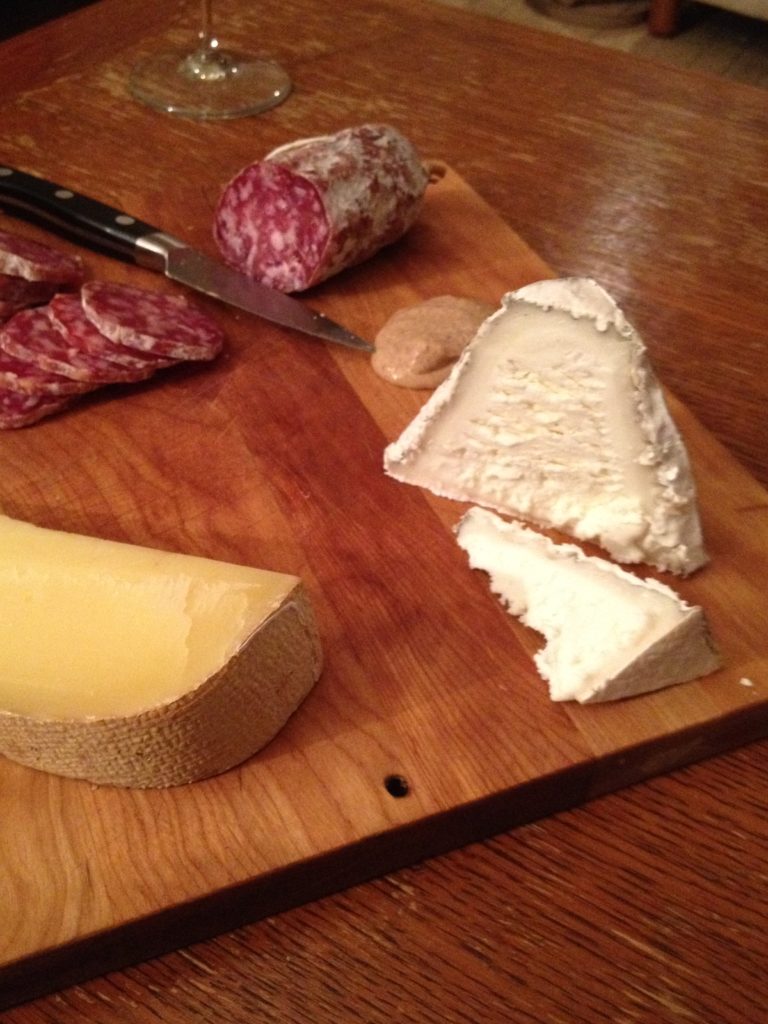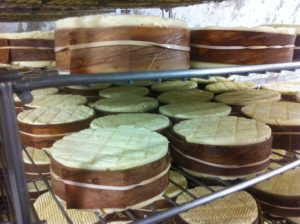As Murray’s Bleecker Street store’s newest cheesemonger, I know that cheese can be a little intimidating…particularly when you’re staring at over 350 in our cheese case! The fact is, the new turophile (that’s cheese lover in laymen’s terms) may be racked with indecision and anxiety when trying to decipher the ins and outs of the wonderful world of fromage.
“With so many to taste, how will I know which one is for me?” this person might ask. And then there are inevitable questions like: Which milk types should I try? Will it taste like it smells? Should I eat the rind? FOR THE LOVE OF CHEESE, WHERE DO I EVEN BEGIN?!
That’s where I come in, my friends. Below I’ve listed a variety of 5 cheeses that the cheese neophyte can start with, learn from, AND enjoy. And those of you with a little more expertise should read on, since these cheeses are just plain good eatin’,
1. Westfield Capri*
What’s that? You say you don’t like fresh goat’s milk cheeses? Let me introduce you to the cheese that changes your mind—Westfield Capri from Massachusetts. This little block of goaty goodness is what cream cheese wishes it could be: spreadable and luscious, with a soft texture and mild tangy flavor that melts in your mouth. And—while it tastes great on its own, it pairs perfectly with bagels, fresh fruit, granola or even a brunch-time mimosa.
2. Casatica di Bufala
Alright, folks—it’s time to back away from that generic supermarket brie that’s been coddling you. If you want to get familiar with the richest animal’s milk there is, you have to eat a cheese courtesy of the illustrious water buffalo! This animal’s milk sports twice the fat of a cow’s, and Casatica di Bufala shows off its curves with its mild but buttery rich flavor. The thin, white mold on the outside gives this bloomy-rind cheese a tasty creamline that dissolves into a mildly sweet, silky center. The perfect cheese to pair with a baguette and a light sparkling white wine.
3. Podda Classico
Sometimes, you just want a great snacking cheese. A little nutty with a touch of caramel sweetness, firm but crumbly Podda Classico tastes great sliced up for a cheese plate or grated for a pasta topper. This cow/sheep hybrid from Sardinia has the sharpness of a cheddar and the sweetness of an aged gouda—so you know it’s gotta be good! The full flavor stands up to fruit and wine pairings but won’t overpower them—in short, this is a cheese the whole family will love.
4. Pleasant Ridge Reserve
Sure, the Europeans know how to make delicious cheese. But did you know there’s some incredibly tasty treats coming out of American dairies? This award-winner from Wisconsin plays like a subtler, smoother version of the alpine style Gruyere. Raw cow’s milk provides a foundation for a firm, fruity, grassy palate-pleaser. Goes great with lager or red wine. I like mine with apple slices.
5. Chiriboga Blue
Ah… infamous blue cheese. I see the fear as your eyes wander to the section of the case to the inhabitants dotted with blue mold. But what if I told you there was a blue that you—yes, YOU—might even like? Meet my friend, the Bavarian Chiriboga Blue. This charmer is the perfect gentleman—smooth, sweet, mellow and bright. And—bonus!—unlike some of his friends, he’s not stinky! Give him a chance and you may realize you’ve found your surprise soul mate.
–Lauren McDowell is the newest monger on the counter at Murray’s Cheese. She’s tasting her way to expertise, one cheese at a time!
*Westfield Capri is not currently available online but is sold in our NYC stores.



